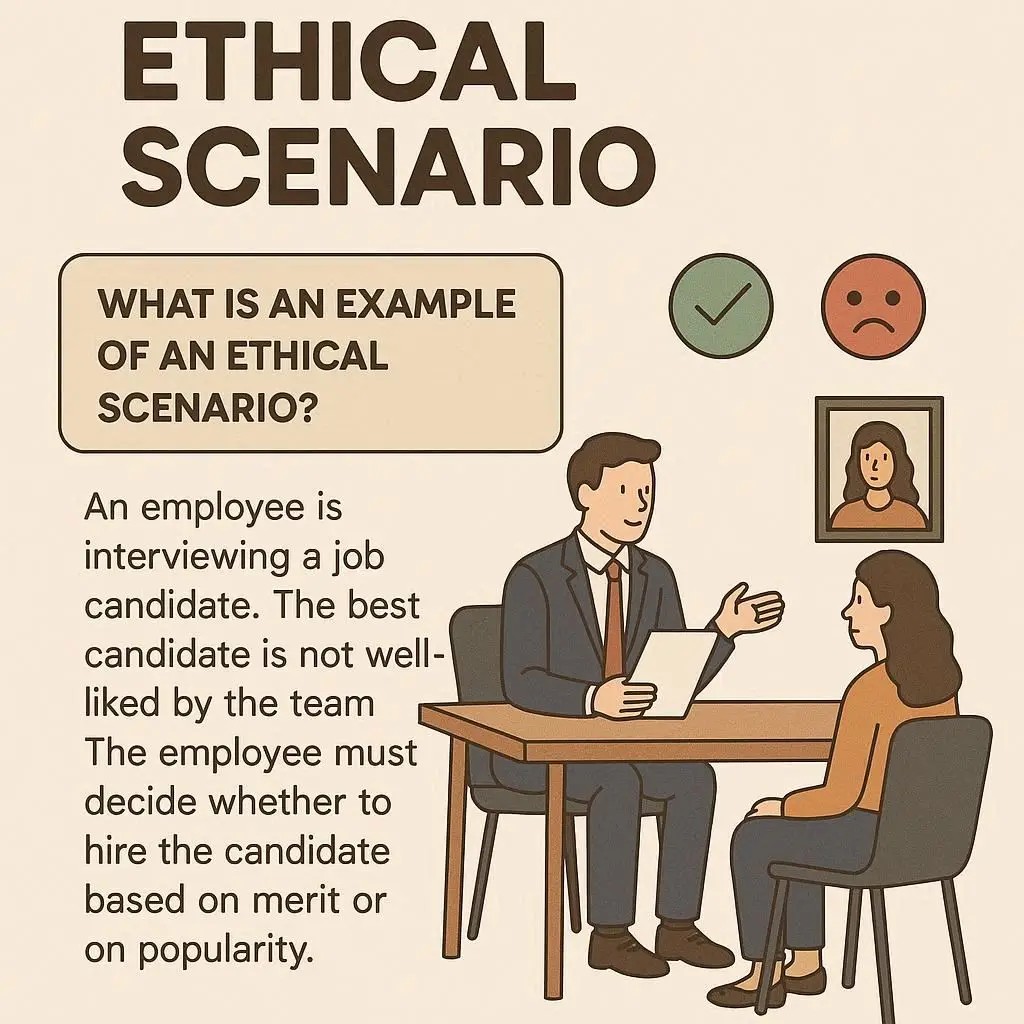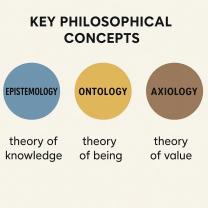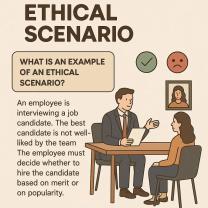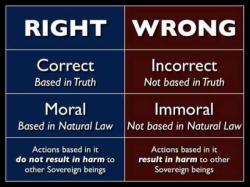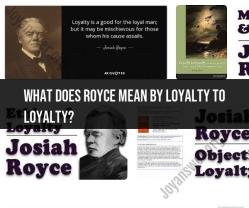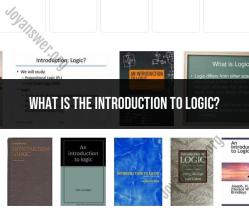What is an example of an ethical scenario?
What Is a Comparative Study? Definition and Examples
A comparative study is a research method that involves analyzing two or more items, subjects, or ideas to identify their similarities and differences. This approach is widely used in academic research, business analysis, literature, and social sciences because it provides a structured way to evaluate contrasting perspectives and gain deeper insights.
Definition of a Comparative Study
A comparative study is designed to compare and contrast specific characteristics of different entities. The purpose is not only to highlight differences but also to find patterns, common ground, or unique features. Researchers use this method to answer questions such as: Which option is more effective? How do two cultures handle the same issue differently? What can one model learn from another?
Types of Comparative Studies
Qualitative Comparative Study
Focuses on descriptive data such as behaviors, texts, or cultural practices. Researchers analyze themes and patterns rather than numbers.Quantitative Comparative Study
Uses numerical data, statistics, and measurable indicators to evaluate similarities and differences. This type often applies in scientific experiments, surveys, and business analysis.Cross-Cultural Comparative Study
Examines how cultural factors influence behaviors, traditions, or decision-making in different societies.Literary Comparative Study
Compares themes, characters, and styles across different works of literature or authors.
Examples of Comparative Studies
Education: Comparing teaching methods (traditional vs. online learning) to determine which improves student performance.
Healthcare: Analyzing patient outcomes from two different medical treatments.
Business: Studying marketing strategies of two competing brands to identify which approach engages more customers.
Literature: Comparing the portrayal of love in Shakespeare’s plays and modern novels.
Culture: Examining differences in family values between Eastern and Western societies.
Why Are Comparative Studies Important?
They help uncover strengths and weaknesses of different systems.
They encourage critical thinking by analyzing multiple perspectives.
They provide practical insights that can be applied in decision-making, policymaking, or academic discussions.
They promote a deeper understanding of diversity and interconnectedness in society.
Conclusion
A comparative study is a powerful research tool that allows individuals to look beyond surface-level information and gain meaningful insights. Whether used in education, business, healthcare, or literature, this method provides a structured framework for understanding similarities, differences, and the potential for improvement.
Examples of Ethical Scenarios in Daily Life
Ethical scenarios are dilemmas where choosing between two or more conflicting moral principles is challenging.
Here are a few common examples:
The Trolley Problem: A classic thought experiment where you must choose between sacrificing one person to save five, or doing nothing and letting five people die.
Finding a Lost Wallet: You find a wallet containing a significant amount of cash and identification. Do you return it, take the money, or return it without the cash?
Honesty vs. Loyalty: Your friend asks you to lie to their parents about where they were last night. Do you tell the truth or protect your friend?
Academic Integrity: You see a classmate cheating on an exam.
Do you report them, knowing it could have serious consequences for their academic career, or stay silent? Confidentiality vs. Safety: A friend confides in you about a plan to harm themselves or someone else. Do you maintain their confidence or break it to ensure safety?
Environmental Responsibility: You witness someone littering in a beautiful natural area. Do you confront them, clean it up yourself, or ignore it?
How to Analyze an Ethical Dilemma
Analyzing an ethical dilemma involves a structured approach to understand the situation, identify the moral conflict, and explore possible solutions.
Recognize the Ethical Issue: The first step is to identify that an ethical dilemma exists.
This often starts with a "gut feeling" that something is wrong or a conflict of values. Try to articulate the issue in a concise sentence. Gather All Relevant Facts: Collect as much information as possible. Who are the stakeholders involved (individuals or groups affected)? What are their perspectives? What are the known facts, laws, and professional standards that apply? Identify any missing information or assumptions being made.
Identify the Ethical Principles/Values in Conflict: Determine which values or duties are at stake.
For example, honesty vs. loyalty, justice vs. mercy, individual rights vs. community well-being, or short-term vs. long-term consequences. Brainstorm Possible Courses of Action: Generate a list of potential solutions without immediately evaluating them. Look beyond obvious choices and consider creative alternatives.
Evaluate Each Course of Action Using Ethical Frameworks: Apply various ethical frameworks (discussed below) to each option. Consider the potential harms and benefits to all stakeholders.
Make a Decision and Justify It: Choose the option that best aligns with the ethical principles, values, and evidence. Be prepared to explain why you chose this action and how it minimizes harm while upholding important values.
Implement the Solution and Reflect: Put your decision into action. Afterward, reflect on the outcome: Was it satisfactory? What lessons were learned? Does it point to a systemic problem that needs addressing?
Frameworks for Making Ethical Decisions
Ethical frameworks provide systematic ways to approach and resolve moral dilemmas.
Utilitarianism (Consequence-Based Ethics):
Core Idea: The most ethical action is the one that produces the greatest good for the greatest number of people.
The focus is on the outcomes or consequences of actions. How to Apply: For each possible action, identify all affected stakeholders and determine the benefits and harms for each.
Choose the action that maximizes overall happiness, well-being, or utility and minimizes suffering. Question: "Which option will produce the most good and do the least harm?"
Deontology (Duty-Based Ethics):
Core Idea: Ethical actions are those that adhere to moral duties, rules, or obligations, regardless of the consequences.
Certain actions are inherently right or wrong. How to Apply: Identify the relevant moral duties or rules (e.g., don't lie, keep promises, respect rights). Choose the action that fulfills these duties, often based on principles like universalizability (would you want everyone to act this way?) and respect for persons.
Question: "Which option best respects the rights of all who have a stake?"
Virtue Ethics (Character-Based Ethics):
Core Idea: Focuses on the character of the moral agent rather than specific actions or their consequences. It asks what a virtuous person would do.
How to Apply: Consider what virtues are relevant to the situation (e.g., honesty, courage, compassion, fairness, integrity).
Choose the action that demonstrates these virtues and contributes to becoming the kind of person you aspire to be. Question: "What kind of person will I become if I do this?" or "Is this action consistent with my acting at my best?"
Many ethical decision-making models, like the PLUS Ethical Decision-Making Model, integrate these frameworks or provide a comprehensive step-by-step guide.
Common Ethical Scenarios in Workplaces
Workplace environments frequently present unique ethical challenges.
Unethical Leadership: A manager asks you to manipulate data in a report, spend company money inappropriately, or pressures you to cut corners.
Favoritism and Nepotism: A manager consistently gives preferential treatment, promotions, or benefits to certain employees (friends or family members) over others, regardless of performance.
Conflicts of Interest: You are in a position where your personal interests (e.g., financial investments, relationships) could improperly influence your professional judgment or decisions.
Data Privacy and Confidentiality: You have access to sensitive customer or employee data. The dilemma arises when deciding how much data to collect, how to protect it, or whether to share it.
Whistleblowing: You discover illegal, unsafe, or unethical practices within your organization.
Do you report it, potentially risking your job or reputation? Harassment and Discrimination: Witnessing or experiencing discrimination (based on age, gender, race, disability) or harassment in the workplace.
Taking Credit for Others' Work: A colleague takes credit for a project or idea that you contributed significantly to, or you're part of a team where some members don't pull their weight, but everyone receives equal praise.
Questionable Use of Company Resources: Using company time, technology (internet, phone), or supplies for personal business.
Health and Safety: A workplace environment where safety regulations are overlooked, or employees are encouraged to work long hours leading to stress and unhealthy lifestyle choices.
Unrealistic Goals: Management sets targets that seem unattainable, potentially pressuring employees to engage in unethical behavior to meet them.
Teaching and Learning Ethics Through Scenarios
Using scenarios and case studies is a highly effective method for teaching and learning ethics, as it allows individuals to grapple with real-world complexities in a safe and structured environment.
Engaging and Relevant: Scenarios make abstract ethical concepts concrete and relatable, increasing student engagement and demonstrating the practical application of ethical theory.
Developing Critical Thinking: Analyzing scenarios forces learners to think critically, identify underlying values, weigh competing interests, and justify their decisions.
Promoting Discussion and Debate: Scenarios naturally lead to lively discussions, exposing learners to diverse perspectives and helping them understand that there isn't always one "right" answer. This also builds communication and active listening skills.
Practicing Decision-Making: Repeatedly working through dilemmas in a scenario-based format helps learners develop a systematic approach to ethical decision-making, preparing them for similar challenges in their personal and professional lives.
Safe Environment for Exploration: Learners can explore difficult moral choices and their potential consequences without real-world repercussions, fostering a sense of psychological safety.
Identifying Biases and Assumptions: Discussions around scenarios can help individuals recognize their own biases, preconceptions, and loyalties, leading to more objective analysis.
Developing Empathy: Considering dilemmas from multiple stakeholder perspectives fosters empathy and understanding of how different individuals might be affected by an ethical decision.
How it's done:
Present the Scenario: Provide a detailed, realistic, and often ambiguous ethical dilemma.
Individual Reflection: Ask learners to individually analyze the scenario, identify the issues, stakeholders, and potential actions.
Small Group Discussion: Have learners discuss the scenario in small groups, sharing their initial thoughts and applying ethical frameworks.
Large Group Debrief: Facilitate a class-wide discussion, comparing different analyses, proposed solutions, and the reasoning behind them.
Introduce Ethical Frameworks: (If not already introduced) Present relevant ethical decision-making frameworks and guide learners in applying them to the scenario.
Refine and Reflect: Encourage learners to refine their ethical arguments and reflect on how their understanding evolved through the process.
This method helps bridge the gap between theoretical ethical principles and their practical application, creating more ethically aware and capable decision-makers.
